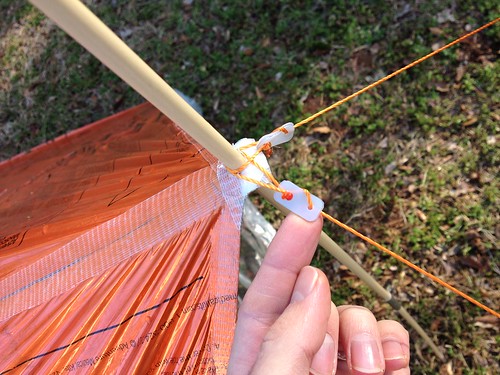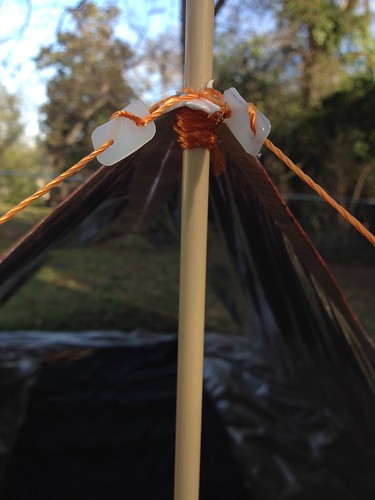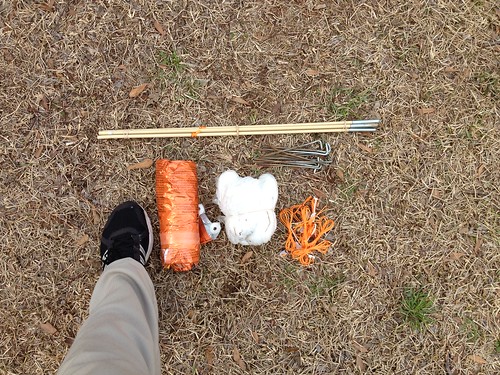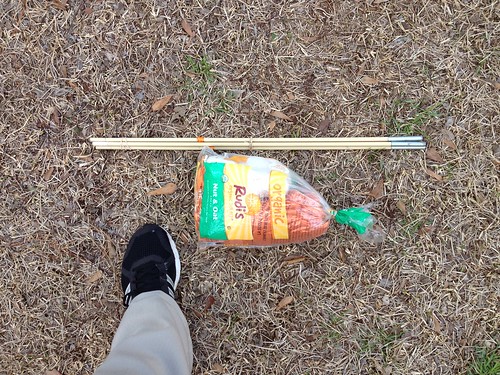Here's my homemade tent. It still needs bug netting and zippers sewed onto the ends, but it's completely useable in it's current state, especially if I go before the bugs get bad. I could have gotten away with one guy line per end instead of two, but it's much more stable in wind this way.

The poles are just four sections borrowed from my other tent, so I couldn't cut them down or modify them too much. I've placed them on top of loose chunks of wood so they wouldn't sink into the ground and fill up with dirt.

Here you can see my homemade line tensioners that I cut out of a vinegar bottle. What you can't see is that they're doubled up. The plastic was really thin, so I made them redundant. If the line cuts through one, hopefully the other one will last long enough to get me home. I decided to put the tensioners on the tent side of the lines rather than down near the stakes where they'd get dirty, and I'd have to lean over to adjust them. You can also see the homemade washer I cut from another plastic container, which is permanently attached to the tent and fits over the pole.

This is another view of the pole-tent junction area. From this angle, you can see that I wrapped the pole tightly with cord to hold the tent up at the right height. the wrap is small enough that it still slips into the sleeve on my car camping tent.

The side pull-outs use a length of shock cord that I took out of the tent poles.

My first attempt at making stake loops failed. At first I thought the knots were coming unraveled because the line was so slippery, but on closer inspection, I saw that they were abraded through where the wind was making them rub against the stakes. So, I doubled up the loops and pushed the stakes all the way down, nearly underground, so there's no room for the cord loops to slide against them. So far, this is working much better.

Looking through the tent, you can see that it should have good ventilation, even once I get the bug-net doors up. The ground sheet is the thinnest painter's drop cloth I could find, 0.7 mil. I fully expect that I'll get holes in it, but it came 100 to a roll. There's also a CCF pad hidden somewhere under that huge sleeping bag.

Here's the poles, stakes, tent, ground sheet, and cords with my foot for comparison.

And here it is packed into a bread bag. My bathroom scale says it weighs two pounds all told, but it's only accurate to 1/2 a pound, so really it's between 1.5 and 2.5 pounds.

I've been working on this for a long time and haven't kept up with the exact costs, but I figure so far, the tent adds up to less than $40.
Total: ~$70
EDIT: I think it's between 1.75 and 2.25 pounds, since, outside of that range, my scale would have rounded up or down.

















 Previous Topic
Previous Topic Index
Index







